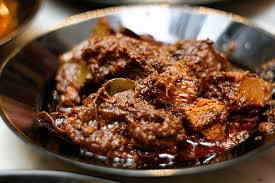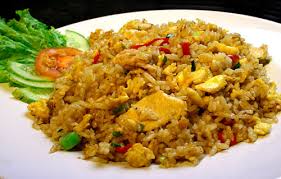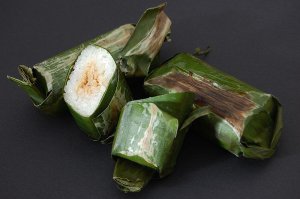Culinary Crusade
One of my favorite things about Indonesia so far is the food. As a lover of all things spicy, tasting the various regional specialties has been a dream come true. My first foray into the local cuisine was upon my arrival in Padang, a city known for having some of the spiciest dishes in all of Indonesia. Their most famous dish, and one of my favorites, is called beef rendang. It is chunks of beef stewed in spicy coconut milk and chili gravy, cooked until dried. It was listed by CNN as the number one dish of the world’s 50 most delicious food and is often referred to as west Sumatran caramelized beef.

Another of my other favorite dishes is nasi goreng, Indonesian fried rice. It is referred to as the national dish of Indonesia and listed by CNN as the second place dish of the world’s 50 most delicious foods. It is often served with a fried egg, small chunks of beef sausage, prawns, squid, or chicken. Nasi goreng is traditional served as breakfast food at home, made out of leftover rice from the night before.

More commonly seen than even nasi goreng is soto. You can find this soup just about anywhere, be it an open market eatery, street vendor, or fancy restaurant. It is a soup mainly composed of broth, meat, turmeric, and vegetables. There are about a dozen different variations on this dish that vary depending on the available ingredients in the region. Most commonly you’ll see soto ayam (chicken soup) that is served as a comfort food of sorts. My first taste of soto was soup with chicken feet floating around in it. Seems a bit strange, but the feet added some really good flavor. Just watch out for the small bones! And it is good to squeeze in some lime to balance out the fatty acids.
No dish is complete without krupuk. It is a deep fried, starchy cracker, often flavored. People say that it aids with digestion. Nor is any dish complete without rice. Indonesians joke that if they haven’t had rice yet, then they haven’t really eaten. Rice is incorporated into every mean of the day, be it rice porridge for breakfast, lempur (sticky rice stuffed with chicken or fish and rolled into a banana leaf, then grilled) for lunch, or a bed of rice topped with grilled chicken and green chilies for dinner.

The treat of eating in Indonesia is not just the foods itself, but the means of eating. The tradition in Indonesia is to eat with your right hand (it is very rude to eat with your left), particularly with Padang food. First you wash your hand in kobokan, a small dish of water. And then you eat! Eating with your hand makes it easier to pull chicken or fish off the bone. It also makes it easier to mix in the delicious sauces and spices into the bed of rice. It is said that your finger-tips contain good probiotics that help with digestion.
Supposedly when the first Indonesian ambassador went to a dinner with the Queen, everyone gave him queer looks for using his hand to eat. When asked why he uses his hand, he replied that he knows exactly where his hand has been and that he is the only one who uses his hand, but he does not know who has used those forks. More people use utensils now, usually using both spoon and fork to deftly do the mixing and separating that hands were traditionally used for.
I look forward to expanding my culinary horizons on my mission to try all that Indonesia has to offer.